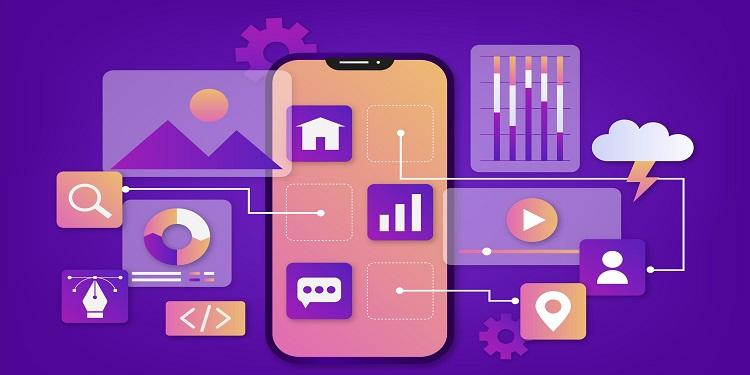As the world continues to evolve, so does the way we communicate with each other and the tools that we use. Today, cross-platform app development frameworks are more important than ever before. These frameworks allow developers to build apps that can be used on multiple platforms without much additional programming knowledge.
What is a cross-platform app development framework?
A cross-platform framework is a toolset that allows you to build applications for multiple platforms and then reuse the same code base to run on multiple platforms.
When working with mobile applications, the most important thing you must know is the frameworks widely used in cross-platform development and testing. In this article, we have listed down the best cross-platform app development frameworks.
12 Best Globally Renowned Cross-platform App Development Frameworks
Xamarin
Xamarin is one of the best cross-platform app development frameworks that help developers to build native apps with C#. The demand for Xamarin app development services is increasing at a breakneck speed because of its core strength which lies in its ability to run across multiple platforms, including Android, iOS, MacOS, and Windows. The framework allows you to write your code in C# and compile it into a native app for each platform.
The Xamarin framework has very deep integration with both Android and iOS SDKs. You can use this framework to build apps for both platforms using a single code base and API calls.
Hybrid Android & iOS Development
It’s a good option for apps that require a high degree of interactivity, like games and social media apps.
Hybrid mobile apps are cross-platform, meaning they can run on Android or iOS devices. These applications typically have much more functionality than their counterparts developed using only one operating system (OS). Some examples include:
- A photo-sharing site with both iOS and Android versions would allow users to share photos from either platform without having to switch between them manually every time someone wants to post something new on their feed or timeline.
- An e-commerce store where customers can purchase items from either platform without having trouble finding what they need when shopping around town!
React Native
It is a JavaScript library that allows you to build native mobile apps using React. It’s built on React, so it’s easy to learn and use.
It is a framework for building native apps for iOS and Android. It uses JavaScript code as the base language for writing applications that run on these two platforms (iOS and Android), but it also provides tools for building cross-platform desktop applications.
Electron
Electron is a cross-platform framework for building and running applications. It is based on Node.js and uses Chromium as its base, making it compatible with all major desktop operating systems like Windows, macOS, and Linux.
It allows you to build native apps in JavaScript using web technologies like HTML5 elements or WebGL 2 API support that enable you to create hybrid mobile apps that run on Android and iOS devices.
The primary goal of this framework is to enable developers who want to target multiple platforms without having to write code for each platform themselves — which would be difficult due to differences in how different operating systems handle memory management (elements may disappear from view during scrolling), threading models (elements can’t be used from other threads), etc.
Vue.js
Vue.js is a progressive framework, meaning it is designed to grow with your app. This means that Vue can be used in any application, from small single-page applications to large complex applications that need interactivity and animation.
Vue also has advanced features such as data binding, so you don’t have to worry about writing code on every page or what happens when the browser refreshes its content or loses focus on an element.
ReactJS
ReactJS is a JavaScript library that allows you to build user interfaces. It’s often used to build single pages and web applications but can also be used for mobile and desktop applications.
The benefits of using React are that it has a very simple syntax, allowing you to write your code quickly; because it uses JSX (a markup language), which compiles into HTML; and because there are many tools available for using React in different ways – whether it’s creating Single Page Applications (SPAs) or shared-screen experiences like Flux on GitHub!
Angular2+
Angular2+ is a JavaScript framework for building mobile and desktop web apps. It’s built on the AngularJS family but is more powerful and robust than its predecessors.
Cordova/PhoneGap
Cordova is a software development kit (SDK) that enables the creation of native mobile apps for Android, iOS, and Windows devices. Nitobi Technologies created it in 2011. The framework allows developers to create hybrid apps that run on multiple platforms through its JavaScript API or native APIs (depending on what platform you’re building).
NativeScript
NativeScript is a cross-platform framework that allows you to write Android, iOS, and Windows phone apps. It’s based on AngularJS but has a few key differences. Since it uses TypeScript instead of JavaScript, it’s easier to use with NodeJS—which means you can build your app serverless or even run them in containers!
NativeScript also has many prebuilt widgets, including cards, buttons, and more. This makes development faster than other frameworks like React Native or Xamarin Studio because fewer steps are involved in creating something from scratch (no boilerplate code).
Ionic Framework (formerly called ngCordova)
Ionic Framework (formerly ngCordova) is a hybrid app development framework for building hybrid mobile apps with HTML, CSS, and JavaScript. It’s been around since 2014 but has gained popularity in recent years thanks to its ease of use and implementation across all platforms.
The framework includes Cordova plugins to help you create native-like applications on iOS and Android using web technologies. You’ll need a knowledge of these languages if you want to build your own apps using this toolkit rather than importing them from other sources like Google Play Store or Apple App Stores, respectively.
Fuse Project
Fuse Project is an open-source, cross-platform software development framework that allows developers to create hybrid mobile apps across iPhone/iPad and Android devices. It uses HTML5, CSS3, and JavaScript to deliver a fast and easy way to create cross-platform mobile apps quickly.
Appcelerator Titanium
Appcelerator Titanium is open-source toolkit developers use to easily develop native Android apps with Xamarin Studio (Mac). It gives you access to Appcelerator’s tools and libraries, such as MVC architecture, native UI controls, database connectivity, SQLite support, and more.
Bottom Line
If you’re looking for the best cross-platform framework to build your next app, we hope this list will help guide you through the process. It’s important to remember that no matter which one of these frameworks your team chooses, plenty more may be right for them. Zorbis recommends starting with some research into the features each framework offers before committing to a single choice—and make sure you have ample time and resources allocated towards development!



